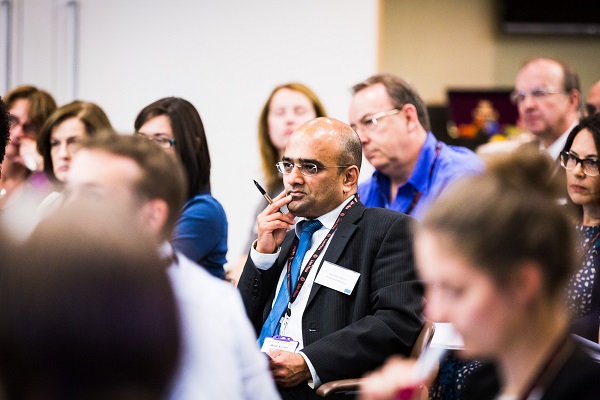Last week was a busy one, with not one, but two events focusing on how pharmaceutical companies and patient groups can work together to create better research. On Monday and Tuesday, Oliver attended EyeForPharma’s conference: “Patient-Centric Clinical Trials”. On Friday, Eve and Oliver attended Findacure’s workshop on “How Rare Disease Patient Groups Can Work With Pharma.” In today’s blog they both report back on how the events went.OliverLast week I attended two conferences on how patient groups and pharmaceutical companies can work together. For us this is important, as the DevelopAKUre clinical trials relies on input from pharmaceutical company, Sobi, to allow us to investigate nitisinone fully.

On Monday and Tuesday I was invited to present our DevelopAKUre clinical trial at EyeForPharma’sconference: “Patient-Centric Clinical Trials”. The two-day meeting aimed to look at the advantages of increasing patient interaction in clinical research, with case studies looking at best practice models. After giving an overview of how we try to involve patients as much as possible in DevelopAKUre, I joined a panel discussion on using the latest technologies to drive patient recruitment. This was a good opportunity to talk about the social media we use; especially the online communities like PatientsLikeMe and RareConnect. In fact, one of the speakers on the panel was from PatientsLikeMe, explaining how the community is a useful tool for helping patients track their own health.

The audience was a mix of a few patient groups, and mainly representatives from pharmaceutical companies. They seemed excited to learn about how to engage more with patients and patient groups in research. Obviously some attendees were more reserved, but overall I was impressed most companies are open to the idea of working with patients, and some have actively started new projects to engage more closely.EveOn Friday, I attended Findacure’s workshop on “How Rare Disease Patient Groups Can Work With Pharma”. Virginia Acha from ABPI was the first speaker, who discussed regulations around pharma and patient group interaction. Virginia was keen to point out how valuable patient collaborations can be and went on to discuss patient involvement in trial design and drug development.

The following speed networking session allowed us to meet and communicate with a variety of different people. The session facilitated interesting conversations between people from pharma and patient organisations.

After tea, coffee and some delicious biscuits, representatives from pharma and patient groups talked about their personal experience of collaborating. Bruce Faulkner-Dunkley from Sobi talked of their collaboration with the AKU Society. He referred to industry as “ …the helper and facilitator which enables things to happen”. Bruce was keen to highlight the importance of the patients and patient groups, referring to Robert Gregory as the “…driving force behind research into AKU”.

Namrata Taak from GSK gave an industry perspective on collaboration. She talked about how valuable it had been to work with patient organisations in Europe and the US, as this allowed them to develop a better understanding of the patient journey.

Robert Meadowcroft from Muscular Dystrophy UKwas the final speaker of the day. Robert discussed the current delay by the NHS in making a decision about funding a potential treatment. He highlighted the importance of putting pressure on the government by emphasising how detrimental this delay is to patients.The overall day was very interesting, and it was great to hear about the Sobi/ AKU story as a successful collaboration. Hopefully the knowledge, stories and networks will allow more rare disease groups to work with pharma in the future.

